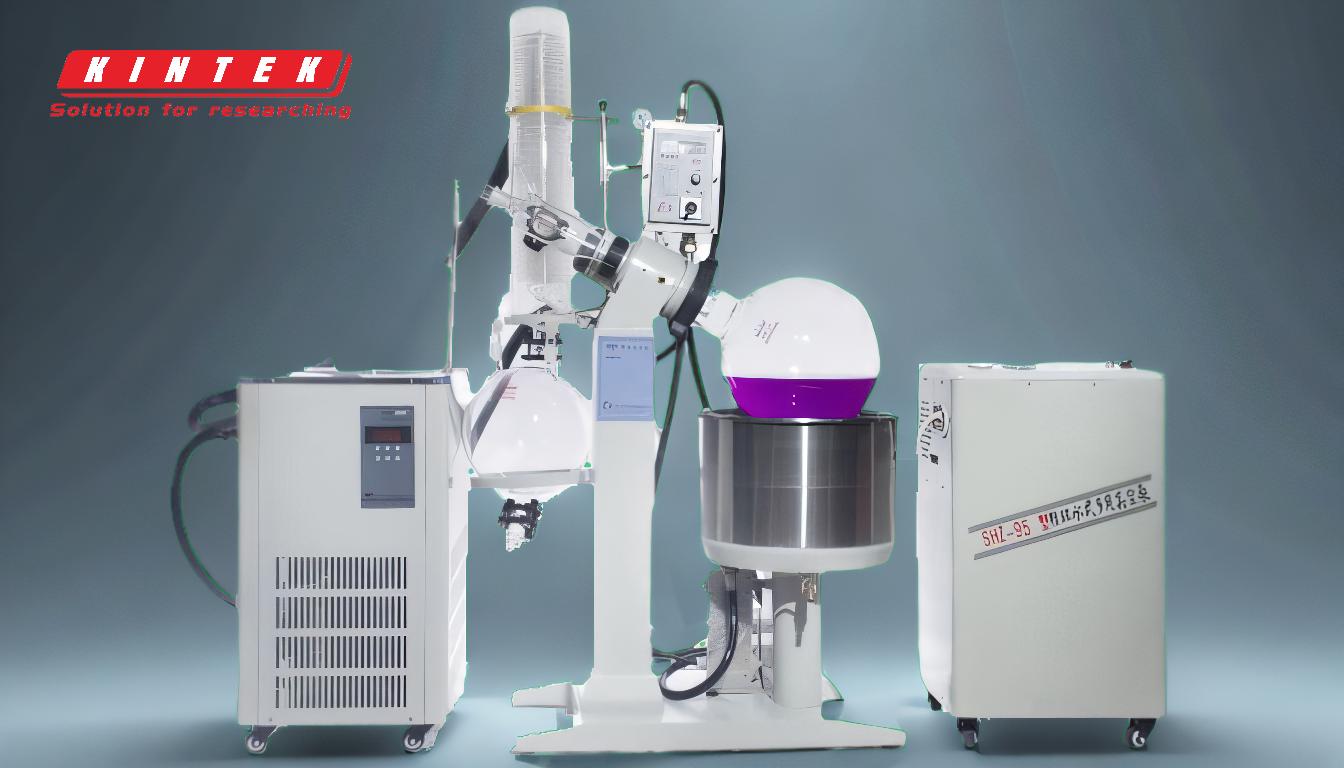Evaporating ethanol from an extract without a rotary evaporator is feasible using alternative methods that mimic the principles of evaporation and solvent recovery. While a rotary evaporator is efficient, other techniques such as open-air evaporation, water baths, or specialized evaporators like falling film or wiped film evaporators can achieve similar results. These methods rely on controlled heat, airflow, or vacuum systems to lower ethanol's boiling point and facilitate evaporation. Each method has its advantages and limitations, depending on the scale, desired purity, and equipment availability. Below, we explore key methods and considerations for effectively evaporating ethanol without a rotary evaporator.
Key Points Explained:

-
Open-Air Evaporation:
- Process: Place the ethanol extract in a shallow, wide container to maximize surface area and expose it to ambient air. Ethanol will evaporate naturally over time.
- Advantages: Simple, cost-effective, and requires no specialized equipment.
- Limitations: Slow process, susceptible to contamination, and not suitable for large volumes or time-sensitive tasks.
- Tips: Use a fume hood or well-ventilated area to avoid inhaling ethanol vapors. Stirring occasionally can speed up evaporation.
-
Water Bath Evaporation:
- Process: Submerge the container with the ethanol extract in a water bath heated to a temperature below ethanol's boiling point (78°C). The gentle heat accelerates evaporation.
- Advantages: Faster than open-air evaporation and provides better control over temperature.
- Limitations: Requires a heat source and monitoring to prevent overheating, which could degrade the extract.
- Tips: Use a thermometer to maintain the water bath at 40-60°C for safe and efficient evaporation.
-
Vacuum-Assisted Evaporation:
- Process: Use a vacuum pump to reduce pressure in a sealed container, lowering ethanol's boiling point and enabling evaporation at lower temperatures.
- Advantages: Faster evaporation, preserves heat-sensitive compounds, and minimizes solvent loss.
- Limitations: Requires a vacuum pump and airtight setup, which may not be readily available.
- Tips: Combine with mild heat (e.g., a water bath) for enhanced efficiency. Ensure the container can withstand vacuum pressure.
-
Falling Film Evaporator:
- Process: The extract flows as a thin film over heated surfaces, allowing ethanol to evaporate quickly. This method is similar to a vertical shell-and-tube heat exchanger.
- Advantages: Efficient for large-scale operations, continuous processing, and high heat transfer rates.
- Limitations: Requires specialized equipment and is more complex to operate.
- Tips: Suitable for industrial applications where high throughput and solvent recovery are critical.
-
Wiped Film Evaporator:
- Process: A thin, turbulent film of the extract is spread over a heated surface using rotating wipers, promoting rapid evaporation of ethanol.
- Advantages: Excellent for heat-sensitive materials, high evaporation rates, and minimal thermal degradation.
- Limitations: Expensive equipment and maintenance-intensive.
- Tips: Ideal for small to medium-scale operations requiring high purity and minimal solvent residues.
-
Recovery and Safety Considerations:
- Solvent Recovery: If ethanol recovery is desired, use a condenser to capture and condense evaporated ethanol for reuse.
- Safety: Ethanol is flammable, so avoid open flames and ensure proper ventilation. Use explosion-proof equipment in industrial settings.
- Environmental Impact: Minimize ethanol emissions by using enclosed systems or fume hoods.
By selecting the appropriate method based on your specific needs—whether it's simplicity, speed, or scalability—you can effectively evaporate ethanol from extracts without a rotary evaporator. Each method offers unique benefits, and combining techniques (e.g., vacuum-assisted water bath) can further enhance efficiency and results.
Summary Table:
| Method | Advantages | Limitations |
|---|---|---|
| Open-Air Evaporation | Simple, cost-effective, no special equipment required | Slow, susceptible to contamination, not suitable for large volumes |
| Water Bath Evaporation | Faster than open-air, better temperature control | Requires heat source, risk of overheating |
| Vacuum-Assisted Evaporation | Faster evaporation, preserves heat-sensitive compounds, minimizes solvent loss | Requires vacuum pump and airtight setup |
| Falling Film Evaporator | Efficient for large-scale, continuous processing, high heat transfer rates | Requires specialized equipment, complex to operate |
| Wiped Film Evaporator | Ideal for heat-sensitive materials, high evaporation rates, minimal degradation | Expensive equipment, maintenance-intensive |
Need help choosing the best method for your ethanol evaporation? Contact our experts today for personalized advice!














